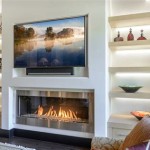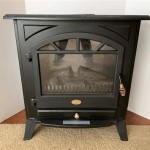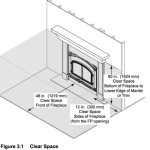What Color To Paint Walls With A Red Brick Fireplace
Selecting a wall color to complement a red brick fireplace is a common interior design challenge. The inherent warmth and texture of red brick can be both an asset and a limitation, influencing the overall ambiance of a room. This article will explore various color palettes and design principles to aid in choosing the optimal wall color, focusing on creating a cohesive and visually appealing space.
The red in brick is not a monolithic color; it often incorporates variations in hue, ranging from deep crimson to subtle terracotta. Furthermore, the brick may contain undertones of brown, orange, or even gray. Careful observation of these nuances is fundamental to making an informed color decision. A thorough assessment of the brick's specific color profile will guide the selection of wall colors that either harmonize with or intentionally contrast against its natural tones.
Lighting conditions within the room also play a significant role. Natural light will render colors differently than artificial light, impacting both the perceived hue of the brick and the surrounding walls. Colors can appear warmer under incandescent lighting and cooler under fluorescent lighting. Before committing to a paint color, it is advisable to test samples on the wall, observing how they appear during different times of the day and under various lighting conditions. This step ensures the chosen color remains aesthetically pleasing regardless of the time of day or light source.
Understanding Color Theory and Brick Undertones
Color theory provides a framework for understanding how colors interact and influence perceptions. Complementary colors, found opposite one another on the color wheel, can create a striking contrast. Analogous colors, located adjacent to each other, produce a more harmonious and cohesive feel. Monochromatic color schemes, utilizing varying shades and tints of a single color, offer a sophisticated and understated approach.
To effectively apply color theory, the undertones of the red brick must be identified. Brick with strong orange undertones can be complemented by shades of muted blues or greens, creating a balanced and visually engaging contrast. Brick with brown undertones often pairs well with warmer neutrals, such as beige, tan, or greige (a blend of gray and beige). Brick with gray undertones might benefit from the addition of cooler grays or even subtle shades of blue to enhance its existing characteristics.
Beyond identifying undertones, consider the style and age of the brick. Older, more rustic brick might benefit from warmer, earthier tones to accentuate its character. Newer, more uniform brick may lend itself to a wider range of colors, including cooler, more modern shades.
Neutral Colors: A Safe and Versatile Choice
Neutral colors offer a versatile and reliable option for walls surrounding a red brick fireplace. These colors provide a backdrop that allows the brick to remain a focal point without overwhelming the space. However, the selection of the right neutral is crucial to avoid a dull or uninspired appearance.
White, while a classic choice, can sometimes appear too stark against the warmth of red brick. To mitigate this, opt for off-white shades with warm undertones, such as cream or ivory. These softer whites will complement the brick's natural warmth, creating a cohesive and inviting atmosphere. A crisp, cool white can work in more modern settings, but it requires careful consideration of the brick's specific color profile and the overall lighting within the room.
Gray offers another excellent neutral alternative. Lighter shades of gray, such as pale gray or dove gray, can create a sophisticated and calming ambiance. Warmer grays, often referred to as "greige," combine the neutrality of gray with the warmth of beige, making them a particularly effective choice for complementing red brick. Avoid grays with strong blue or green undertones, as these can clash with the brick's inherent warmth.
Beige and tan are also viable options, particularly when the red brick has noticeable brown undertones. Lighter shades of beige can provide a soft and understated backdrop, while deeper shades of tan can create a more dramatic and cozy atmosphere. When selecting beige or tan, ensure the chosen shade complements the brick's specific color profile and does not appear too yellow or orange, which can create an overwhelming monochromatic effect.
Exploring Bold Colors and Accent Walls
While neutral colors provide a safe and versatile option, incorporating bold colors can create a more dynamic and personalized space. However, the use of bold colors requires careful planning and consideration to avoid clashing with the red brick fireplace. An ideal method for incorporating bold colors can be through accent walls, which are single walls painted in a different color than the rest of the room.
For a striking contrast, consider using shades of blue or green as accent colors. A deep navy blue can create a sophisticated and dramatic effect, while a muted sage green can evoke a sense of tranquility and nature. The intensity of the chosen blue or green should be carefully calibrated based on the brick's specific color profile and the overall lighting within the room. A test patch is always recommended before committing to a full accent wall.
Another option is to use warm, earthy tones that complement the red brick. Terracotta, rust, or even deep browns can create a cohesive and inviting atmosphere. These colors can be particularly effective in rooms with a rustic or traditional style. However, it is important to avoid colors that are too similar to the brick, as this can create a monotonous and uninspiring effect. Choose a shade that is either slightly darker or lighter than the brick to create a visual distinction.
When using bold colors, it is essential to consider the overall style of the room and the desired ambiance. A modern space might benefit from a bold, contrasting color, while a more traditional space might be better suited to a softer, more harmonious palette. The size and shape of the room should also be taken into account. Smaller rooms might feel overwhelmed by dark or intense colors, while larger rooms can handle more dramatic hues. Carefully curated accessories and furniture can help tie the accent wall into the rest of the room's design scheme.
Ultimately, selecting the right wall color to complement a red brick fireplace depends on a careful analysis of the brick's color profile, the room's lighting conditions, and the desired aesthetic. By understanding color theory and considering the various options available, it is possible to create a space that is both visually appealing and harmonious.

The Best Tan Paint Colour To Go With Red Toned Brick Fireplace Sherwin Williams Agreeable G Colors For Living Room Fireplaces

The Best Paint Colors To Go With A Brick Fireplace Kylie M Interiors

What Goes With A Redbrick Fireplace

The Best Paint Colors To Go With A Brick Fireplace Red Fireplaces

The 13 Best Blue Green Blend Paint Colors Beamin Moore Sherwin Williams Red Brick Fireplaces For Living Room Fixer Upper

What Goes With A Redbrick Fireplace

The Best Paint Colors To Go With A Brick Fireplace Kylie M Interiors

The Best Paint Colors To Go With A Brick Fireplace Living Room Wall Color Home For

Pin By David Bothof On Dining Living Rooms Paint Colors For Room Red Brick Fireplaces

16 Red Brick Fireplace Makeover Ideas
Related Posts








